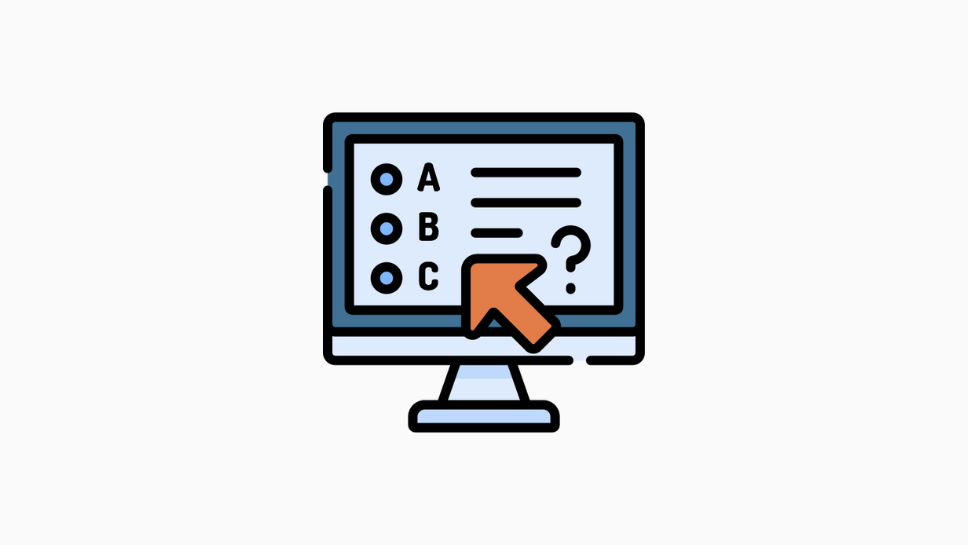Table of Contents
Applying for a career in law feels like a never-ending series of hoops to jump through. Each of which are more challenging than the last.
Sometimes, not only do they seem pretty challenging, but they also appear to be completely unnecessary. This is the feeling many law students have when it comes to Situational Judgement Tests (or SJT for short). After all, how can a few work-related situational assessments accurately reflect how you would react in real life?
It just doesn’t feel fair to fall at this hurdle. After spending hours crafting beautiful applications and meticulously researching the law firm (not to mention the weeks of studying you have done for your exams!), a 20 minute assessment of how you would act in specific situations seems to be a particularly unpredictable testing strategy.
However, there is a good reason why many law firms use such tests and strategies you can implement to ensure you perform well, which I shall explain in this article.
🧪 What is a Situational Judgement Test?
A situational judgement test presents applicants with a number of hypothetical work-related scenarios, in an attempt to see how your responses align with the company culture and to form a deeper understanding of how you solve problems, prioritise tasks, and interact in a team. Unlike an aptitude test (such as the Watson-Glaser Test), which is designed to test your ability to think logically, the SJT is designed to understand your character and personality.
🦖 History of the SJT
Work-related situational judgement testing is not a recent phenomenon. For example, in WW2 army psychologists used a variety of assessments on soldiers to better understand how they would act in different situations (Northrup 1989). These assessments involved participating in a selection of scenarios, which relied on soldiers using their common sense, logical reasoning, general knowledge, and past experiences, to make decisions on how they should act. But, this begs the question, does such testing work in an office environment?
In a recent study by Chan and Schmitt (2002), where they assessed 160 civil service employee using situational judgement tests, it was found that an SJT was an accurate predictor of overall job performance. In particular, the SJT could clearly demonstrate how the individual would perform in three performance dimensions: task performance (core technical proficiency, written & oral communication,), motivational contextual performance (job dedication, motivation to learn, and ability to work hard), and interpersonal contextual performance (interpersonal facilitation, teamwork, and cooperation).
In other words, the SJT is able to help employers understand you quickly and accurately, without having to painstakingly interview every single applicant. There is, quite simply, no better method to understand who you are, the way you think, and your personality traits.
👀 Why do law firms use the SJT?
The history of the SJT should give you a clear understanding of why law firms choose to use the tests during their own hiring process. Although an SJT may seem like an unpredictable and arbitrary testing strategy, the studies are pretty conclusive (you can see more resources down below that back up these findings – there has been a lot of research done about the use of SJTs in the employment process (Weekley and Ployhart, 2006)).
Many law firms receive hundreds, if not thousands, of applications every year, and it would be impossible for them to sit down and chat with every single one of them. It is also too much of a risk to hire someone without understanding a bit more about the way you think. You see, being a lawyer isn’t just about how academically gifted you are, but its also about being able to interact with clients, handle difficult situations, and get on with colleagues.
These additional skills are difficult to test through a written application and an interview alone. Think about it like this: if you were hiring someone, wouldn’t you also want to make sure that they weren’t going to be a psychopath or lunatic a few weeks into starting?
🤨 What are they testing?
Although I have already mentioned various different aspects law firms test through an SJT, these can be broadly categorised into two types of instruction: behavioural tendency instructions and knowledge instructions (McDaniel et al., 2007).
Behavioural tendency instructions asks individuals how they would behave in different situations. The results of these questions tend to align with the applicant’s personality constructs. An example of such a question would be one that asks you what you are most likely to do in response to a hypothetical situation.
Knowledge instructions, on the other hand, ask individuals to evaluate the effectiveness of possible responses to a given situation. The results of these questions tend to align with the applicant’s cognitive ability. An example of a knowledge instruction is one that asks you “what is the best answer?” in response to a set of scenarios.
Whether your SJT is more knowledge based, behavioural based, or a mix of both will depend on the specific law firm. If the law firm is interested in measuring the applicant’s maximal performance then knowledge instructions tend to be used, whereas behavioural tendancy instructions assess the applicant’ typical performance (Lievens et al. 2008).
By understanding the difference between these two types of instruction and what sort of information they are seeking to obtain, your can now approach the SJT and provide your responses from a position of relative strength.
👍🏻 How to do well on the SJT?
Although efforts have been made to standardise SJT, there is still a lot of variation in the testing, so this question isn’t entirely easy to answer. For example, Clifford Chance’s SJT expects you to selection the ‘best option’ in response to different scenarios, whereas other law firms may conduct oral questioning or written questioning where you rank your choices in order of preference.
However, there are two proactive measures you can take to succeed in the SJT.
The first measure is to research the law firm’s website and research what they value and what their specific ‘culture’ is. Do they value teamwork or are they looking for someone who is more independent? Are they after someone who asks for help when they get stuck or someone who can find out the answer alone? Obviously your approach to a question that asks how you would handle a client problem will differ depending on what the firm values most in their lawyers.
The second measure is to practice a number of mock tests and get a feel for the type of questions that you are going to be asked. Most law firms will ask 15-20 questions on their SJT and many offer practice tests before you do the real thing. For example, check out this practice question from Allen & Overy’s SJT:
Finally, don’t overthink these tests. Just consider each situation, ‘diagnose’ the issue and simply do what you think is best. There is no need to stress about perfection because you’re not a laywer yet and you won’t necessarily know precisely what you should be doing; this is what you are going to learn as a trainee and the law firms know this!
🎉 Conclusion
The SJT isn’t perfect, but it’s the best law firms can do when it comes to understanding what you’re going to be like as a lawyers. By having a good understanding of why law firms use SJTs, the specific aspects they are testing, and the culture/values of the firm, knowing the correct response to each situation shouldn’t be so difficult. Trust your gut and don’t overthink it!

